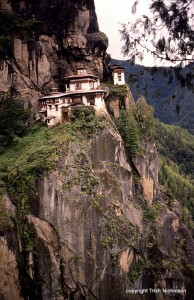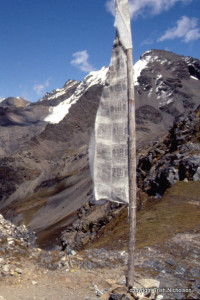 What makes for good travel writing was one of the challenging questions asked by historical novelist, Gabrielle Kimm, when she interviewed me a while ago on her gorgeous website. I have posted an updated version of the interview below.
What makes for good travel writing was one of the challenging questions asked by historical novelist, Gabrielle Kimm, when she interviewed me a while ago on her gorgeous website. I have posted an updated version of the interview below.
GK: What do you think makes for great travel writing?
TN: I weighed this question for a long time because I think the process starts long before the writing. Each author may write from a different perspective, focusing on particular interests, and as long as these are declared, they can be appreciated by readers who share that interest. But overarching this diversity, a great travelogue, to me, is one that combines a strong sense of place and culture with an interpretation of meaning. An ‘interpretation’ because we are all inescapably subjective, and for travel writers, our own culture can be an added burden.

A way to achieve as much detachment as possible from one’s own bias, and be open to an unfamiliar environment, is detailed observation without judgement. Recording minutely, and in a raw state, what all the senses are picking up. The search for meaning comes later, after emersion and reflection lead to better understanding. In other words, I think it is attitude and perception before the writing that is most important. The narrative craft is no different in travel writing to any other creative writing; the only limitation is to stick to the truth as far as the writer can measure it.
GK: Your new book is very vividly written – the first person, present tense narration gives a great sense of immediacy. Was it a conscious decision to choose this narrative structure?
TN: The first time I used first person, present tense – in a short story – I found it difficult, and I think some readers do, too, but thinking about how to share this journey, it seemed the only way to do it. What I wanted to do was to place the reader in my boots, to let them do the trip rather than for me to tell them about it. Writing in the past tense means that events and places are not ‘here, now,’ which I thought would make it harder for the reader to experience ‘being there’, to feel they were doing the travelling. I included extracts from the journal written at the end of each day during my trip – and therefore mostly in past tense – so that there was also reflection. It’s funny, but I now find this narrative form more natural to write than any other.
GK: How much do photographs contribute to a travel book, do you think? Should the words do it all, or is there a place for pictures too?

TN: I don’t think description should depend on photographs; the word-picture should be sufficiently vivid that someone listening to a ‘talking book’, for example, can ‘see’ the images for themselves. But photographs are important for readers’ involvement in other ways. We all react differently to visual cues; we see things through our own memories and imaginations. Pictures evoke specific personal feelings. One reader read the book on an iPad, in colour, and also on a Kindle, which was only in black and white, and she described images on the Kindle as “even more dreamy” – a response that hadn’t occurred to me. And when the author’s own photographs are included, it can add a certain validation to the whole account.
GK: Do you have a favourite moment from your Bhutan trip – if so, what was it and can you tell us why it is memorable for you?
TN: So many memorable moments, but my favourite is standing on a ridge above a high pass, the Nyile La, surrounded by the most incredible landscape and laughing and hugging my companion with sheer joy. The long, steep haul up to the pass had been in an eerie silence, suddenly shattered by the tremendous wind funnelling through the narrow pass when I stepped up to it. On the open ridge, the force of the wind was less, and it felt as if I’d gone through some kind of boundary and emerged at a different level of perception. It gave a whole new meaning to the phrase ‘on top of the world’. It’s a magical moment that remains with me.
GK: Which writers do you most admire and why?
TN: After too many years of functional reading for work and research, my first love, when I turned to fiction, was Joseph Conrad. I think I’ve read everything he wrote. And then I discovered Salman Rushdie through reading Midnight’s Children. In both cases, I admire how they achieve an intimacy with the reader, you feel yourself alone with them, sharing a glass of something in a quiet, comfortable corner, listening to their stories. And in Rushdie’s case in particular, I love his playfulness with words. Another wonderful wordsmith is Le Carré. If I can be allowed a couple of others, they would be Peter Ackroyd and Edward Rutherfurd. Hugely different in the length and style of their writing, but both authors are masters of creating story around real events and people.
GK: Can you name your five favourite books (not sure I can!!)?
TN: You do ask difficult questions, but if I interpret it as those I return to, or dip into, most often, it would be these: Midnight’s Children, of course; A Personal Record – a little book by Conrad on his life and writing that I picked up in a junk shop because I enjoy his company; I shall cheat a bit with a compendium – Great Short Stories of the World; Robert McKees’ Story, for reminders of what my craft is all about, and I have to include my Roget’s Thesaurus, an ancient, battered, but complete edition, another $2 find at a car-boot sale. I haven’t included any biographies, which I love to read, but it’s hard to pick one and you’re being so mean with the books 🙂 (GK: Ha ha! These are the perks of being the interviewer for a change!)
TN: Thank you Gaby, for inviting me to your sumptuous website, and for asking such thought provoking questions. I’ve really enjoyed it.
 GK: And thank you for such fascinating answers! If you are intrigued about Trish’s travel book, Journey in Bhutan: Himalayan Trek in the Kingdom of the Thunder Dragon, you can find out more about it here
GK: And thank you for such fascinating answers! If you are intrigued about Trish’s travel book, Journey in Bhutan: Himalayan Trek in the Kingdom of the Thunder Dragon, you can find out more about it here
******
Did you know that Bhutan is called Druk Yul by the Bhutanese? You can learn why here.
And on the Home Page you can find out about my latest travel memoir: Inside the Crocodile: The Papua New Guinea Journals

A great interview, Trish. I totally agree about the immediacy of the present tense. I really felt I was with you in Bhutan and was surprised when I found you’d done the trip in the eighties! I’ve been doing quite a bit of travelling in eastern Europe this year, and have found myself absorbing impressions and making observations all the time. My blogs only scratch the surface, and sometime I shall try and make my own sense of it all. Maybe a book will come out of it. Who knows? Thanks again for Bhutan. I loved it!
Good to see you Val, and pleased to learn about all your scribbles during your recent travelling. I hope you write it up in another book, I shall look forward to reading it, your blog posts are tasty enticements. Thanks for your lovely comments about Journey in Bhutan.